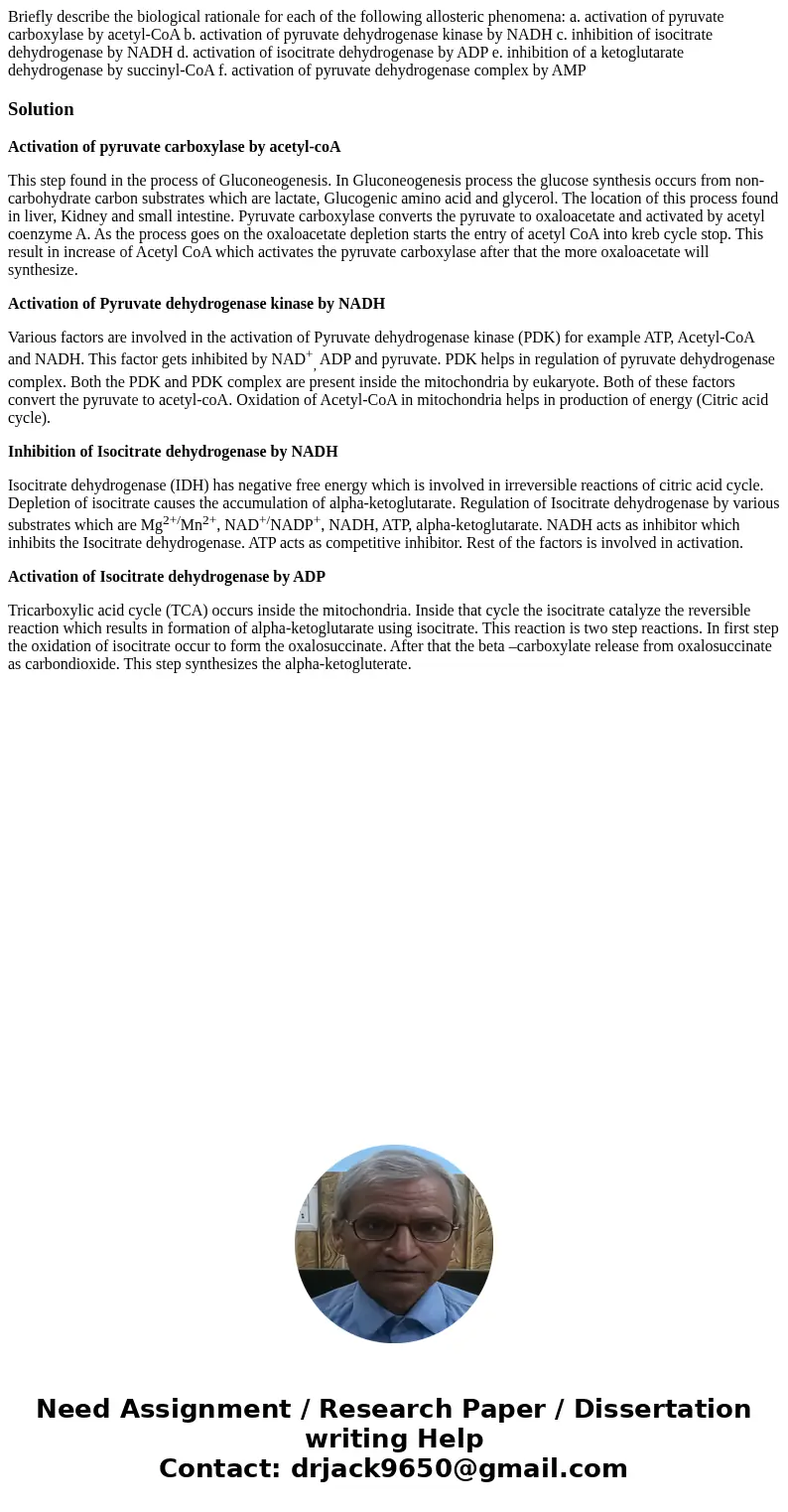Briefly describe the biological rationale for each of the fo
Solution
Activation of pyruvate carboxylase by acetyl-coA
This step found in the process of Gluconeogenesis. In Gluconeogenesis process the glucose synthesis occurs from non-carbohydrate carbon substrates which are lactate, Glucogenic amino acid and glycerol. The location of this process found in liver, Kidney and small intestine. Pyruvate carboxylase converts the pyruvate to oxaloacetate and activated by acetyl coenzyme A. As the process goes on the oxaloacetate depletion starts the entry of acetyl CoA into kreb cycle stop. This result in increase of Acetyl CoA which activates the pyruvate carboxylase after that the more oxaloacetate will synthesize.
Activation of Pyruvate dehydrogenase kinase by NADH
Various factors are involved in the activation of Pyruvate dehydrogenase kinase (PDK) for example ATP, Acetyl-CoA and NADH. This factor gets inhibited by NAD+, ADP and pyruvate. PDK helps in regulation of pyruvate dehydrogenase complex. Both the PDK and PDK complex are present inside the mitochondria by eukaryote. Both of these factors convert the pyruvate to acetyl-coA. Oxidation of Acetyl-CoA in mitochondria helps in production of energy (Citric acid cycle).
Inhibition of Isocitrate dehydrogenase by NADH
Isocitrate dehydrogenase (IDH) has negative free energy which is involved in irreversible reactions of citric acid cycle. Depletion of isocitrate causes the accumulation of alpha-ketoglutarate. Regulation of Isocitrate dehydrogenase by various substrates which are Mg2+/Mn2+, NAD+/NADP+, NADH, ATP, alpha-ketoglutarate. NADH acts as inhibitor which inhibits the Isocitrate dehydrogenase. ATP acts as competitive inhibitor. Rest of the factors is involved in activation.
Activation of Isocitrate dehydrogenase by ADP
Tricarboxylic acid cycle (TCA) occurs inside the mitochondria. Inside that cycle the isocitrate catalyze the reversible reaction which results in formation of alpha-ketoglutarate using isocitrate. This reaction is two step reactions. In first step the oxidation of isocitrate occur to form the oxalosuccinate. After that the beta –carboxylate release from oxalosuccinate as carbondioxide. This step synthesizes the alpha-ketogluterate.

 Homework Sourse
Homework Sourse